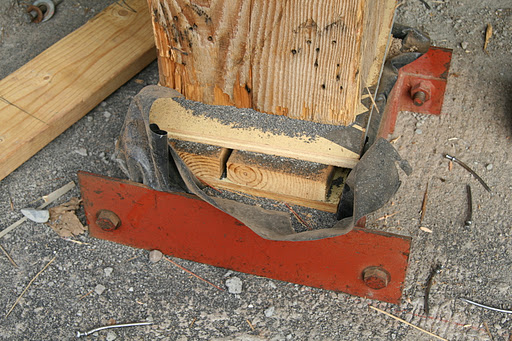Building a Freeway: Sand Jacks and False Work
Building a Freeway: Sand Jacks and False Work

Last month, as part of our Building a Freeway series, we told you about the massive underground support substructures that help give bridges strength.
Next up in the series is an important -- but temporary -- structure that’s used as crews build a bridge, tunnel or even a box culvert.
It’s called false work, and it is used to support the structure until the concrete gets its desired strength and the bridge can carry its own weight.
Imagine that you’re building a bridge out of popsicle sticks. Those sticks can’t support their own weight at first, so you might use some blocks to give it some support until your glue dries.
Those blocks are the basic equivalent to false work…
But now what happens when your bridge is complete and it’s time to take the false work out so you have a fully functioning bridge?
With the popsicle-stick scenario, pulling the blocks out might be pretty easy once your glue is dry. But with a large bridge or tunnel, it’s not so simple.
Because the false work is so tightly jammed up against the structure that it has been supporting, taking it down safely requires something called a sand-jack.
A sand-jack is a simple concept, but really is genius when you think about it …
Basically, it is a metal, square “box” (see photo below). It gets lined with plastic (to keep moisture out) and filled with sand. A ¾-inch piece of plywood goes on top of that sand and the false work is built on top.
Because the sand is contained, none of the weight is going to settle -- there’s nowhere for the sand to go.
Now, when it’s time to take the false work down, all crews have to do is unbolt the sand jack “box” and blow the sand out of it. That gives crews a few inches of “wiggle room” to pull out the false work.
To do that safely, they’ll first secure the false work with a forklift. Next they’ll carefully remove the false work structure, except for the “lid” (not a technical term, but the best word to describe this part of the false work).
The “lid” is the top, flat part of the false work over which the deck of the bridge or culvert is built. Just pulling out its support would be dangerous … so crews hold the lid up with the use of hydraulic jacks. The jacks will set on top of the concrete structure with long rods that run through the jack, through the concrete deck, and finally connecting to the false work lid. After the false work legs have been removed, the crews will slowly lower the false work lid to the ground (imagine a mechanic jacking up a car, but in reverse).
When the false work (including the lid) is all out, the bridge, tunnel or box culvert is ready to go! Check out the video below for a look at false work and sand jacks in action. The structure being built is a box culvert that will be used as an equipment pass through during construction of the Loop 303. We'll explain more about that one soon. Stay tuned...
